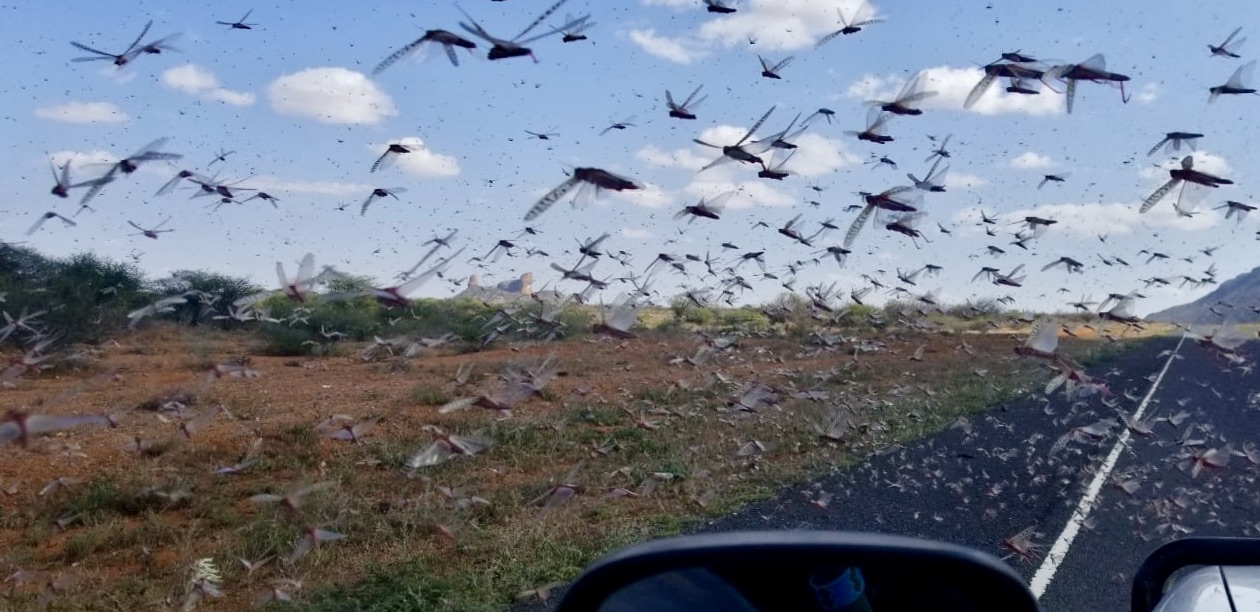Between 2020 and 2021, I coordinated a research project, entitled ‘Mobilising Pastoralist Knowledge to Support the Desert Locust Outbreak Response in Northern Kenya’, in different parts of northern Kenya. Below is a series of photos, stories and information collected over the course of this research.
A final report on this research is being prepared, which will be shared with and validated by key stakeholders in northern Kenya in March 2021. Once validation is complete, the report will be disseminated more widely.
You can read more about this Shared Lands project and see a photo exhibition documenting the research here.

This photo was taken January 2020 in Samburu East, on Sesia Community Land, during the first arrival of the desert locust in Samburu County. This is one of the first swarms of desert locusts to arrive in Samburu East Sub-County. This was a mature swarm, shown here searching for a favourable breeding area.
This photo shows a desert locust feeding on the green leaves of plants during the first invasion of the desert locusts in January 2020 around Kipsing, in Oldonyiro Sub-County, Isiolo County.

The plants below are Datura stramonium. All the leaves have been cleared by the desert locusts during the first invasion by the desert locusts in January 2020. The plants have no benefits to the pastoral community and the community wished the desert locusts could clear all Datura plants, saying the plants are poisonous and kill their livestock.
The sad story is that the desert locusts also cleared all the other plants around, leaving the livestock without the pasture they used to have in the area. The cows in the photo have nothing to collect from the ground and have to cross the land without putting their heads down to eat.


This old man is from a Samburu Community in Oldonyiro Sub-County, Isiolo County. He is narrating the story of the earlier desert locust invasion around 70 years ago. He explained the route taken by the locusts, the roosting and breeding places, as well as the types of responses used by the colonial government in place during the arrival.
These are desert locust nymphs. This photo was from Lenkusaka village near Samburu East Sub-County. The nymphs are in the second or third stage of the development cycle. At this stage, the nymphs do not fly and are very destructive as they crawl across the landscapes – unlike mature locusts that fly from one place to another.


This photo of the dead locust was taken at a place known as Lempaute in Samburu East Sub-County in February 2020. The locust died after a successful response by the desert locust response team. As the locust decay, the area has a bad odour. After the rains, all the dead locusts were washed to Lempaute Dam, used by the community for domestic water. The community reports that the water now has a bad smell. They have stopped taking the water from the dam, instead travelling for long distances for drinking water.
The brown colour on top of the trees are the desert locusts in the affected area at Nkoteyia in Samburu West Sub-County. As this is an ecologically sensitive area, the desert locust response is not supposed to take place in this area but an aerial spray has just taken place before we arrived. The desert locust response team says they do respond in such areas, using more mild insecticides.

